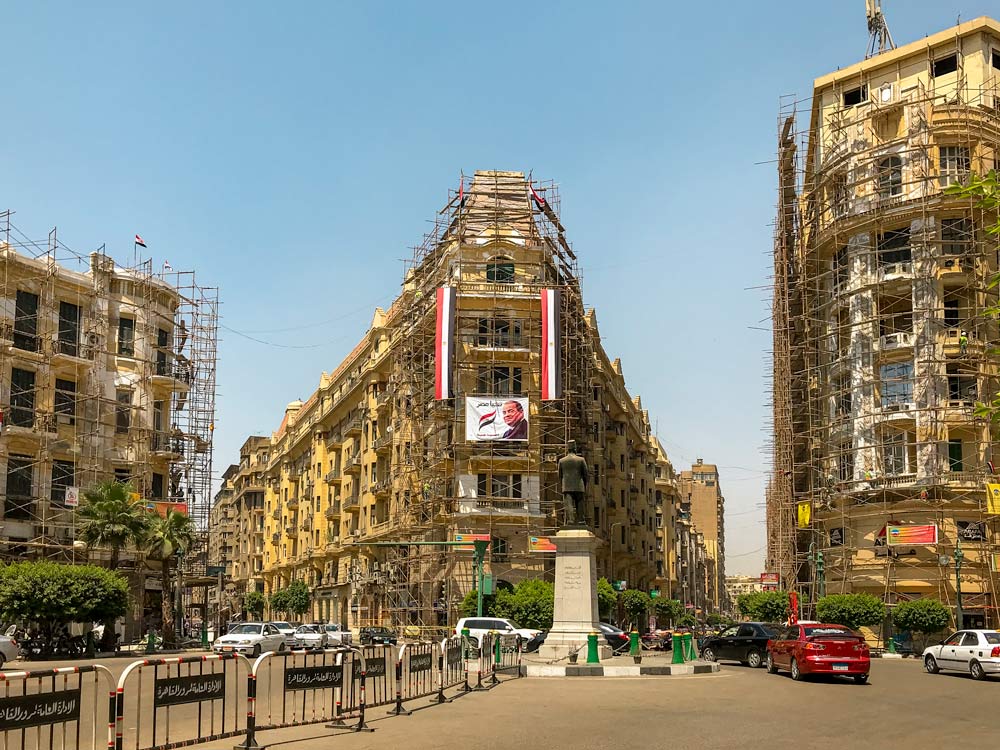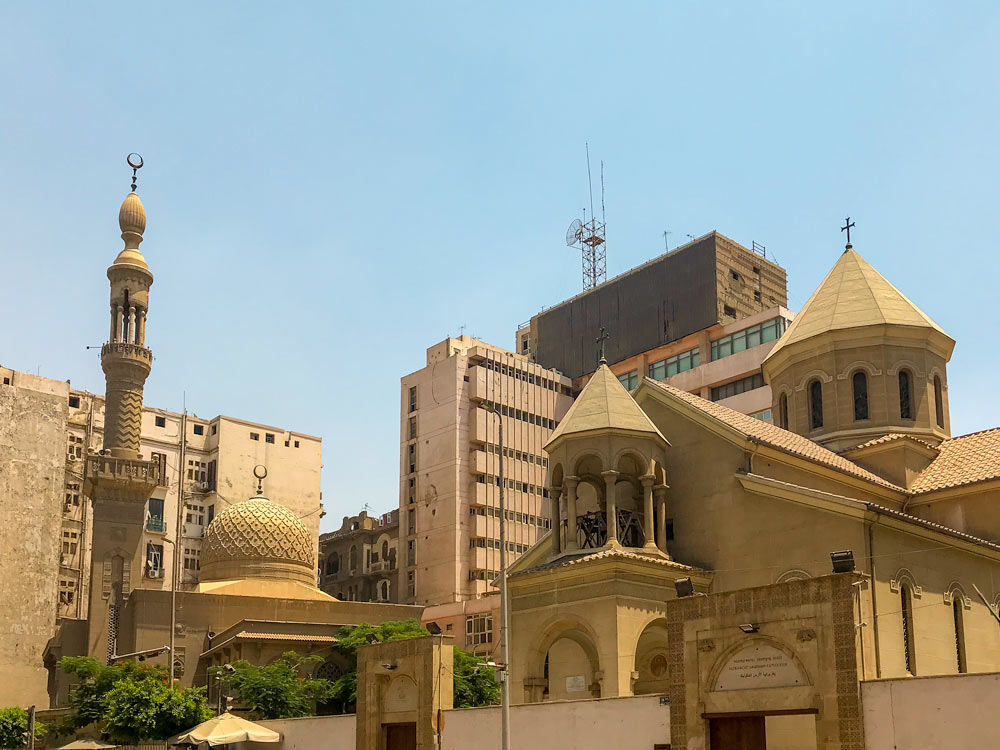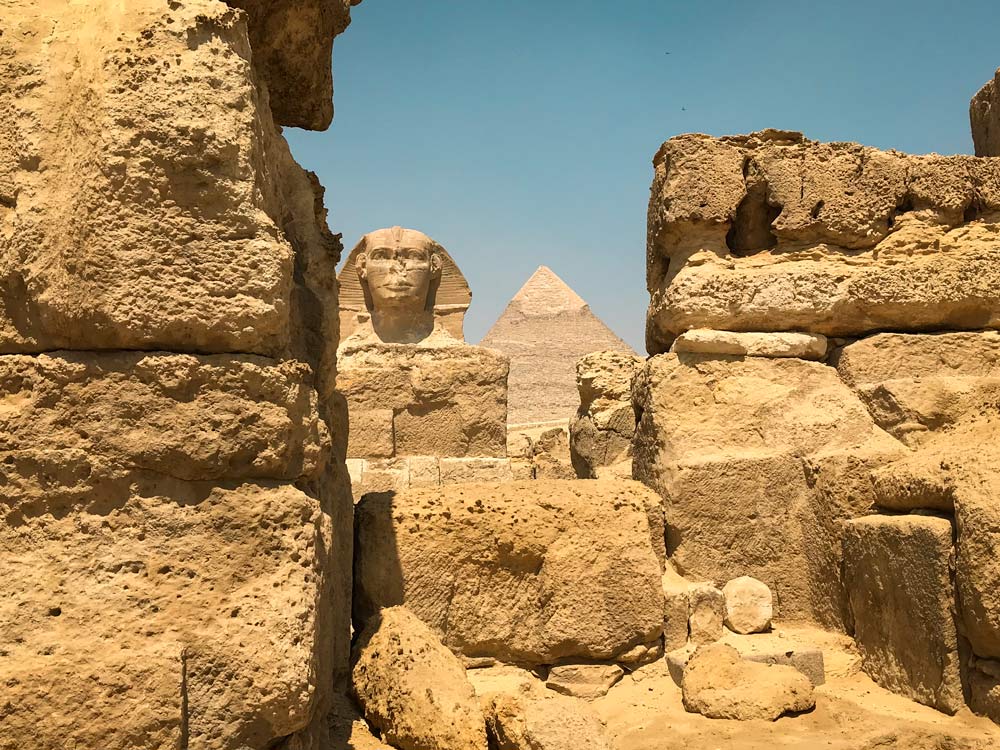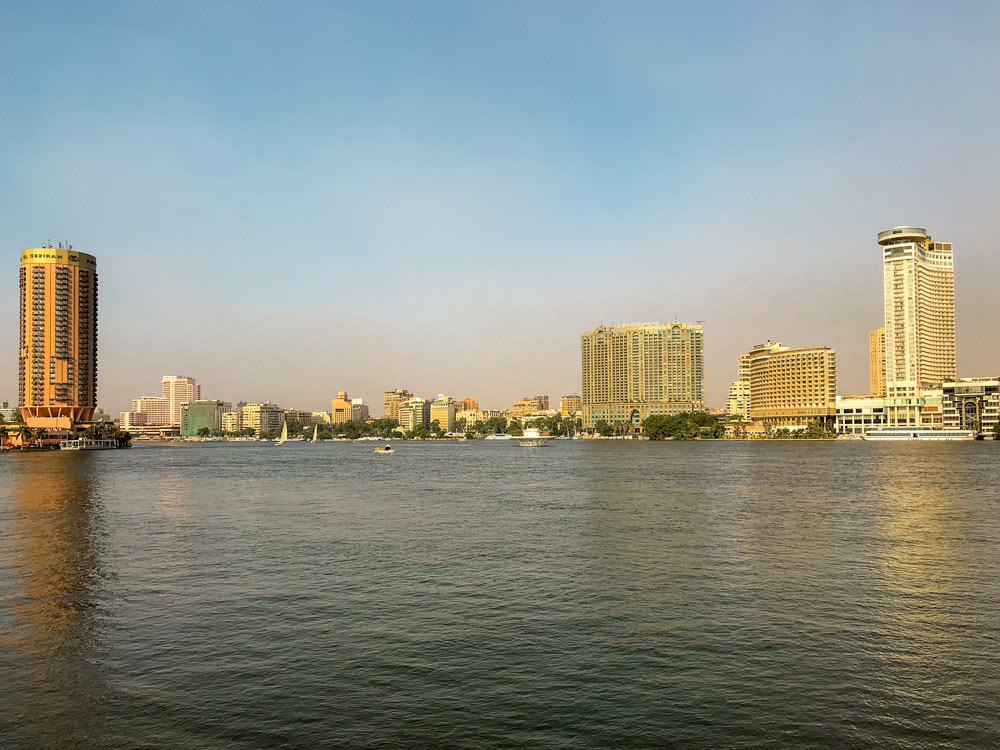In this article, I will introduce the best neighborhoods in Cairo, the capital city of Egypt. Cairo covers over 2730 kilometers, with over 10 million people. It started to grow after Memphis was on the decline, somewhere around the fourth century AD.
The city has many districts, but western Cairo, in general, is characterized by open spaces, boulevards, and modern architecture. There is a strong European influence. On the other hand, Eastern Cairo has Islamic Architecture, small lanes, and crowded tenements.
Downtown Cairo
The main center and heart of Cairo. It came to life between 19th and 20th century. Its cosmopolitan history is evident in the architecture, which blends Art Deco and Belle Époque styles. Its main highlight is Tahrir Square, a site for major political events such as the Egyptian Revolution (2011). The district is also home to many art galleries and cultural events like the Egyptian Museum, Townhouse Gallery, and Mashrabia Gallery.
When visiting downtown, be sure to check out Talaat Harb Square. It is a good area with many cafés (Groppi – offers delicious pastries and desserts) and shops. It got its name after Tallat Harb Pasha, a notable Egyptian economist.
The area also has a vast green oasis – Al-Azhar Park. It is an ideal spot for relaxing, picnicking, or taking short walks, whether alone, with family, or with friends.


Giza
Technically, Giza is a separate city from the Cairo metropolitan area. It lies on the west bank of the river Nile. The district has a great connection with the rest of Cairo thanks to public transport. It is also home to the famous Pyramids of Giza and the Sphinx. The area boasts many hotels, historical attractions, and tourist facilities like the Solar Boat Museum.

Zamalek
The next one on the list of best neighborhoods in Cairo is Zamalek. It lies on the Gezira Island in the Nile River. The place has an upscale ambiance with a lot of green leafy streets. The architecture primarily features an elegant 19th-century style. It is home to many foreign embassies, international schools, notable cultural and artistic institutions, and buildings. For example, you will find the Cairo Tower, Cairo Opera House, Aisha Fahmy Palace, many galleries (such as Picasso Art Gallery, and Zamalek Art Gallery), and cultural centers like El Sawy Culture Wheel. Many of them showcase traditional Egyptian art. The district provides excellent opportunities for upscale dining, entertainment, and recreational activities. For instance, the Gezira Sporting Club is the oldest and most prestigious in Egypt. The abundant greenery provides opportunities for golfing or strolls through the parks.
Garden City
Garden City district lies on the eastern bank of the Nile River, right next to downtown Cairo. It is a refined and tranquil area, characterized by quiet streets and numerous historic buildings, many of which date back to the early 20th century. Originally designed for the elite, it retains a charming old-world ambiance. One thing that adds to its prestige is the presence of embassy buildings, such as American or British. Luxurious hotels like the Four Seasons Hotel Cairo at Nile Plaza, grand villas, and many stylish apartments offer a high-quality environment for life.

Heliopolis
This neighborhood was built in the early 20th century by industrialist Baron Empain, who was of Belgian origin. People designed it to become a modern and luxurious suburb. There is even a palace named after him. The architecture of the place is a mixture of Islamic, Moorish, and European styles. There are many green parks, spacious tree-lined streets, and wide boulevards. It is a very safe and family-friendly environment with many religious sites including the Basilica of Heliopolis, and some mosques. It also lies near the airports but has a great connection with public transport (metro line number 3) to other parts of the city.
Islamic Cairo (Old Cairo)
Islamic Cairo, a UNESCO World Heritage Site, boasts many iconic structures. For instance, you can visit the Al-Azhar Mosque, Sultan Hassan Mosque, Ibn Tulun Mosque, or the Citadel of Saladin. The history of many of these buildings goes back to the medieval times. Al-Azhar University is one of the oldest and most prestigious Islamic universities. Today it continues to be the center for Islamic learning.
In addition to its significant religious sites, you can explore its vibrant bazaars and markets, such as the famous El Khalili Bazaar.
Coptic Cairo
The area is home to many historical religious sites of Christian heritage. According to sources, it was the place that the Holy Family used as a refugee camp during their flight to Egypt. The ancient churches worth visiting or admiring from the outside include the Hanging Church, the Church of St. Sergius and Bacchus, and the Church of St. Barbara.
If you want to delve deeper into the Coptic heritage, visit the Coptic Museum. It has a broad collection of Coptic art, artifacts, and manuscripts.
Another important historical landmark is the Synagogue of Ben Ezra. Some believe that it was here where baby Moses was found.
There are also some remains of Roman and Byzantine structures. These include the Babylon Fortress, with its towers visible around.
For many religious people, the place is a favorite destination for pilgrimage or religious tourism.
Maadi
The area lies in the southern part of Cairo. Some of its key features include green spaces like tree-lined avenues, maintained gardens, and parks. It usually attracts families with children and expatriates. Because of that, there are many international schools, social clubs, and cultural centers like the Cairo American Collage, or the Maadi British International School.
The architecture offers a blend of modern apartments, elegant villas, and gated communities.
Dokki and Mohandiseen
Both districts are in the Giza Governorate. There are more commercial hubs with residential appeal and multicultural environments. They offer easy access to the heart of Cairo and super conditions for modern urban life. Dokki is an excellent area for students, thanks to the proximity of Cairo University’s main campus, numerous private schools, and language institutes. On the other hand, Mohandiseen, a relatively young neighborhood developed in the 1950s and 60s, is a shopping haven. Lebanon Square, a well-known commercial center, is surrounded by department stores, malls, and boutiques. The neighborhood is faddish for socializing and leisure activities, attracting residents and visitors.